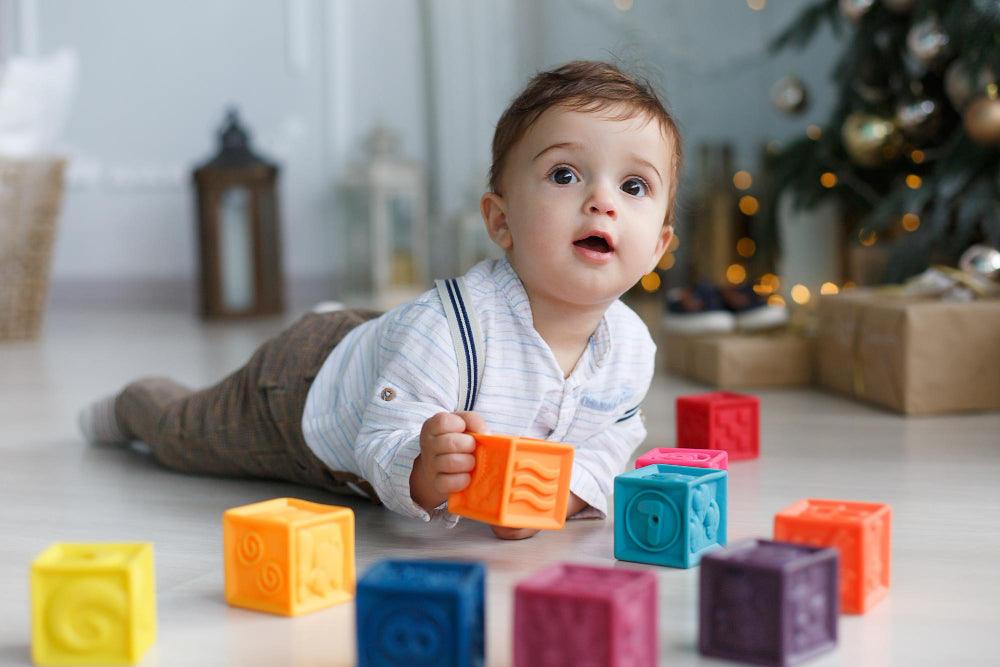The Importance of Baby Toys for Learning and Development
When it comes to babies, it's no secret that they are like sponges, soaking up knowledge and experiences from the world around them. As parents, you want to provide the best opportunities for your little ones to learn and grow. One of the most effective ways to do this is through the power of play, and that's where baby toys come into play. In this article, we'll explore the vital role baby toys play in the learning and development of your precious bundle of joy.
Table of Contents
| Sr# | Headings |
|---|---|
| 1 | Introduction: Playful Path to Development |
| 2 | 1. The Learning Playground: Baby Toys |
| 3 | 2. Sensory Stimulation: A World of Textures and Sounds |
| 4 | 3. Motor Skills Mastery: The Art of Movement |
| 5 | 4. Cognitive Growth: Puzzles and Problem Solving |
| 6 | 5. Emotional Development: Building Bonds |
| 7 | 6. Social Skills: Playmates and Interaction |
| 8 | 7. Safety First: Choosing the Right Toys |
| 9 | Conclusion: Nurturing the Future |
| 10 | FAQs: Answering Common Questions About Baby Toys |
Introduction: Playful Path to Development
Babies are incredible learners from the moment they are born. They are born curious, eager to explore, and ready to absorb everything their senses can detect. As parents, it's our job to provide an environment that nurtures this natural desire for growth and learning. Enter baby toys – the gateways to a world of discovery.
1. The Learning Playground: Baby Toys
Play as the foundation of learning:
-
Educational Toys: Shapes, colors, numbers, and letters.
-
Interactive Toys: Toys that respond to touch or sound.
2. Sensory Stimulation: A World of Textures and Sounds
Engaging the senses:
-
Soft and Plush Toys: Encourage tactile exploration.
-
Musical Toys: Introduce the world of sounds and rhythm.
3. Motor Skills Mastery: The Art of Movement
Physical development through play:
-
Rattles and Teethers: Grasping and coordination.
-
Push and Pull Toys: Crawling and walking.
4. Cognitive Growth: Puzzles and Problem Solving
Exercising little minds:
-
Shape Sorters: Understanding shapes and spatial awareness.
-
Stacking Toys: Enhancing hand-eye coordination.
5. Emotional Development: Building Bonds
The role of comfort toys:
-
Security Blankets: Providing comfort and a sense of security.
-
Favorite Stuffed Animals: Companions in times of need.
6. Social Skills: Playmates and Interaction
Learning to share and communicate:
-
Dolls and Action Figures: Encourage imaginative play.
-
Playdates and Socialization: Building friendships.
7. Safety First: Choosing the Right Toys
Ensuring safe playtime:
-
Age-Appropriate Toys: Check labels for age recommendations.
-
Non-Toxic Materials: Ensure toys are free from harmful substances.
Conclusion: Nurturing the Future
Baby toys are not just objects; they are tools for growth and development. They pave the way for a bright future filled with possibilities. As parents, you have the privilege of shaping the learning journey of your child, one playful moment at a time.
FAQs: Answering Common Questions About Baby Toys
Q1: When should I start introducing toys to my baby?
A1: You can start introducing toys to your baby as early as a few months old. Choose toys that are age-appropriate and safe.
Q2: How many toys should I give my baby at once?
A2: It's best to provide a few toys at a time to avoid overwhelming your baby. Rotate toys to keep their interest.
Q3: Are electronic toys better for my baby's development?
A3: While some electronic toys can be educational, it's essential to balance them with toys that encourage hands-on exploration and creativity.
Q4: Can I use everyday objects as baby toys?
A4: Yes, everyday objects like wooden spoons, plastic containers, and soft fabrics can serve as great toys for sensory exploration and imaginative play.
Q5: What safety precautions should I take when choosing baby toys?
A5: Always check for small parts that could be a choking hazard, ensure toys are made from non-toxic materials, and follow age recommendations on toy labels to ensure safety during playtime.
Image by Holiak on Freepik










